Communication on the Road#
Ever been deep in the mountains with your crew, carving through corners, when you spot something important, but can’t say a word because there’s no cell service? That’s where two-way radios (or walkie talkies) come in. Whether it’s calling out road hazards, coordinating pit stops, or just sharing the moment, radios keep everyone connected when mobile data disappears.
Car enthusiasts using radios isn’t a new concept, its been in the car scene for quite awhile whether just for simple communication, spotters to flag cars coming down, or even reporting of police. Its utility is unmatched in areas where you can’t get a signal with your phone and is easy to use when try to keep focused on the road. Some disadvantages, however, are lack of privacy, range, and additional cost. Despite this, its advantages outweigh its benefits so I decided to get one (or four).
Picking a Radio#
When picking a radio, there are essentially four main “protocols” that it uses: FRS, CB, GMRS, and HAM. This is primarily for FM radio (better than AM).
Family Radio Service (FRS)#
FRS radios are often what people imaging when they say “walkie talkie”. They are generally sold as pairs (bubble packs) and have low power and range transmissions. Not ideal for usage in a car, especially if there is range, trees, or elevation in the way. Car enthusiasts do use these however. However, you pretty much have to be right next to, or behind each other for these. For these reasons, a no go for me.
Citizen Band (CB)#
CB radio has its roots in truckers. Many truckers will have one in their trucks to communicate with others. Popular frequencies are Channel 9 for emergencies and Channel 19 for highway communication. In addition to this, car enthusiasts have been using CB radio for a long time. It’s wide range means talking to others is easy and as long as you have relatively OK line of sight communication isn’t that spotty. The most common usage I’ve seen with car enthusiasts is running in canyons where they can get a decent signal.
This seemed like the obvious choice but CB radio does have a few downsides. First while the range is large, the quality of sound isn’t great. Even if you receive a transmission, it can sound distorted. That’s why truckers with their height and long highways with great line of sight can use them. The second is that the antenna needed to run CB radio is ridiculously long and looks quite silly despite being functional. For me, these two reasons were enough to put me off a bit to look for something better.
General Mobile Radio Service (GMRS)#
GMRS radios offer a solid balance between power, range, and sound quality. They operate on similar frequencies to FRS, but with much higher output power, up to 50 watts for mobile units. That power boost makes a big difference, especially in mountainous or forested terrain where signal strength matters. GMRS radios also tend to offer better voice clarity than CB, and the antennas are much more manageable in size, especially if you go with a mobile unit mounted in your car.
One of the best things about GMRS is its compatibility with repeaters. If you’re in an area with a repeater network, you can drastically extend your communication range, even across multiple ridgelines. This is a huge advantage for spirited drives in the backcountry where cell coverage is nonexistent. In addition, GMRS lower channel frequencies (Channel 1-8) overlap with FRS frequencies. This is helpful if you want to communicate within a long convoy but the other party only has their kid’s toy walkie talkies (generally FRS).
You do need an FCC license to operate GMRS, but there’s no exam, just a simple application and a one-time fee ($20) that covers your entire family for ten years. A top contender for my picks.
Amateur Radio (HAM)#
HAM radio is the gold standard in terms of range, clarity, and capability—but it comes with more responsibility. Unlike GMRS, HAM does require passing a test to get licensed. That said, the entry-level Technician license isn’t too hard to get, and it opens up access to a huge variety of frequencies and features.
With HAM, you can tap into powerful repeaters, use digital modes, and even bounce signals off satellites if you’re into that kind of thing. In terms of performance, nothing really beats it. It’s also a favorite among off-roaders and serious overlanders because of the reliability and extended reach.
The downside? It’s a quite bit more involved to set up, and because of the licensing and technical learning curve, it can be overkill if all you need is basic comms on a cruise.
My Decision#
In the end, I eventually went with GMRS. I considered it the sweet spot. It’s got better range and clarity than FRS, without the baggage of CB, and doesn’t require the same level of technical knowledge as HAM. The I bought four radios total. Two Retivis RB17P hand held radios and two Retivis RA86 mobile radios. The intent was for the RA86’s to go into the S2000’s and the RB17P’s be for spotters, extras, etc. that came with us.
RA86 S2000 Installation#
Once I got them, I did a preliminary setup within my car testing functionality, range, and basic usage. Overall, it was pretty good but there was a lack of a place to put the hand held. Down the road, I’ll try to get a Modifry radio (headunit) bracket for it.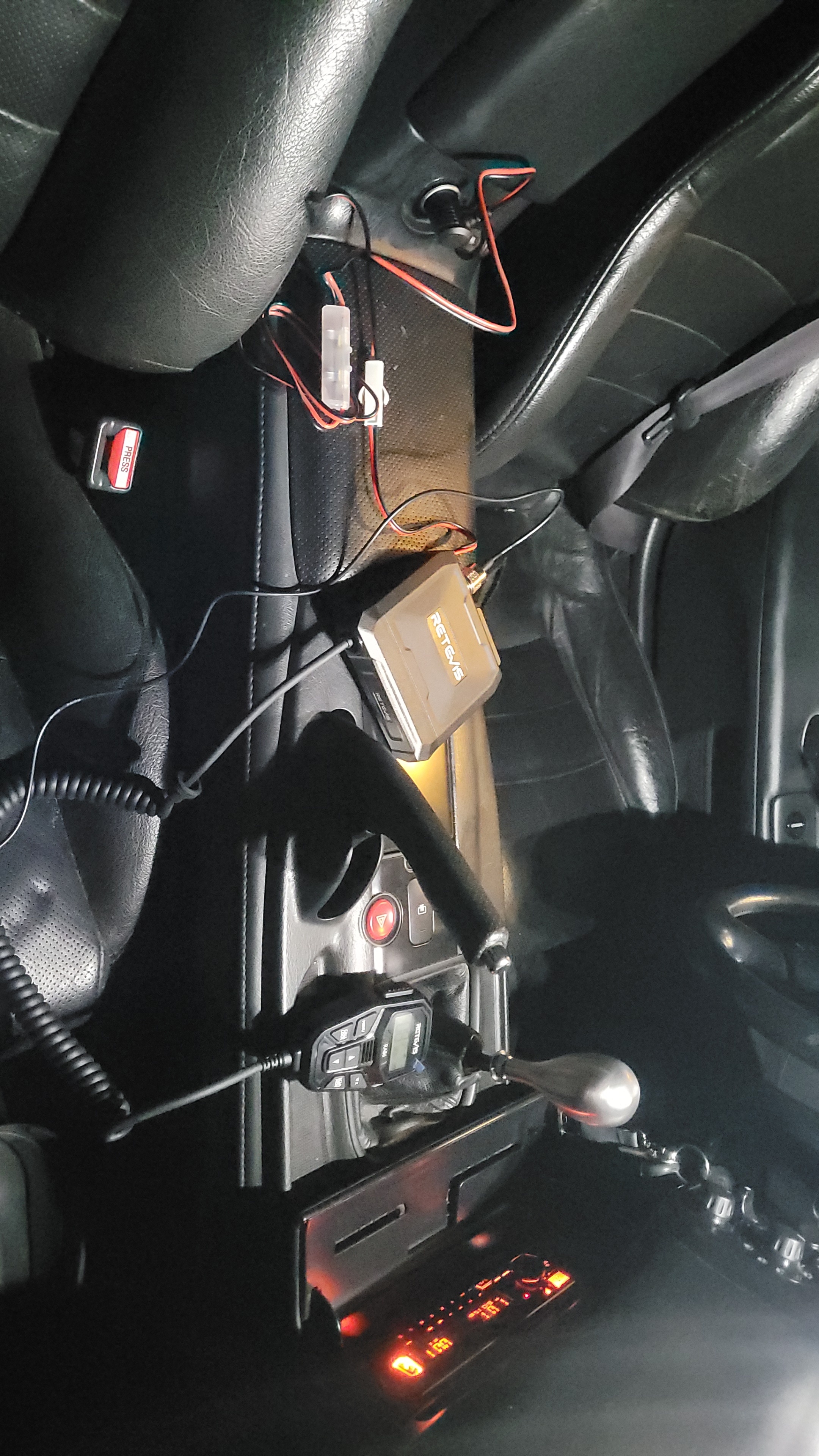
It did look a little out of place splayed out out like that so I tucked the main unit under the passenger seat and routed the antenna to behind the passenger head. I placed the hand unit clipped to the sun visors but since this caused extra wear on them, I eventually took them down.
Placing the antenna behind the passenger head was not a good choice; The factory rollover protection creates some sort of Faraday cage and signal wasn’t that good unless directly behind the antenna. To solve this, I decided the best place would be where the original S2000 radio antenna was. I use Bluetooth so removing it wouldn’t hurt the functionality. In addition, it would give it a very clean look.
For this, I took out the factory radio unit and measured the dimensions needed to position the antenna accordingly. I then created a mount in SolidWorks and sent the STL to a friend that access to a 3D printer at their workplace. After a long print, they dropped it off and I installed it. Along with it came a top hat that I tried to create but got the dimensions all wrong. For now, I covered the opening with some painters tape.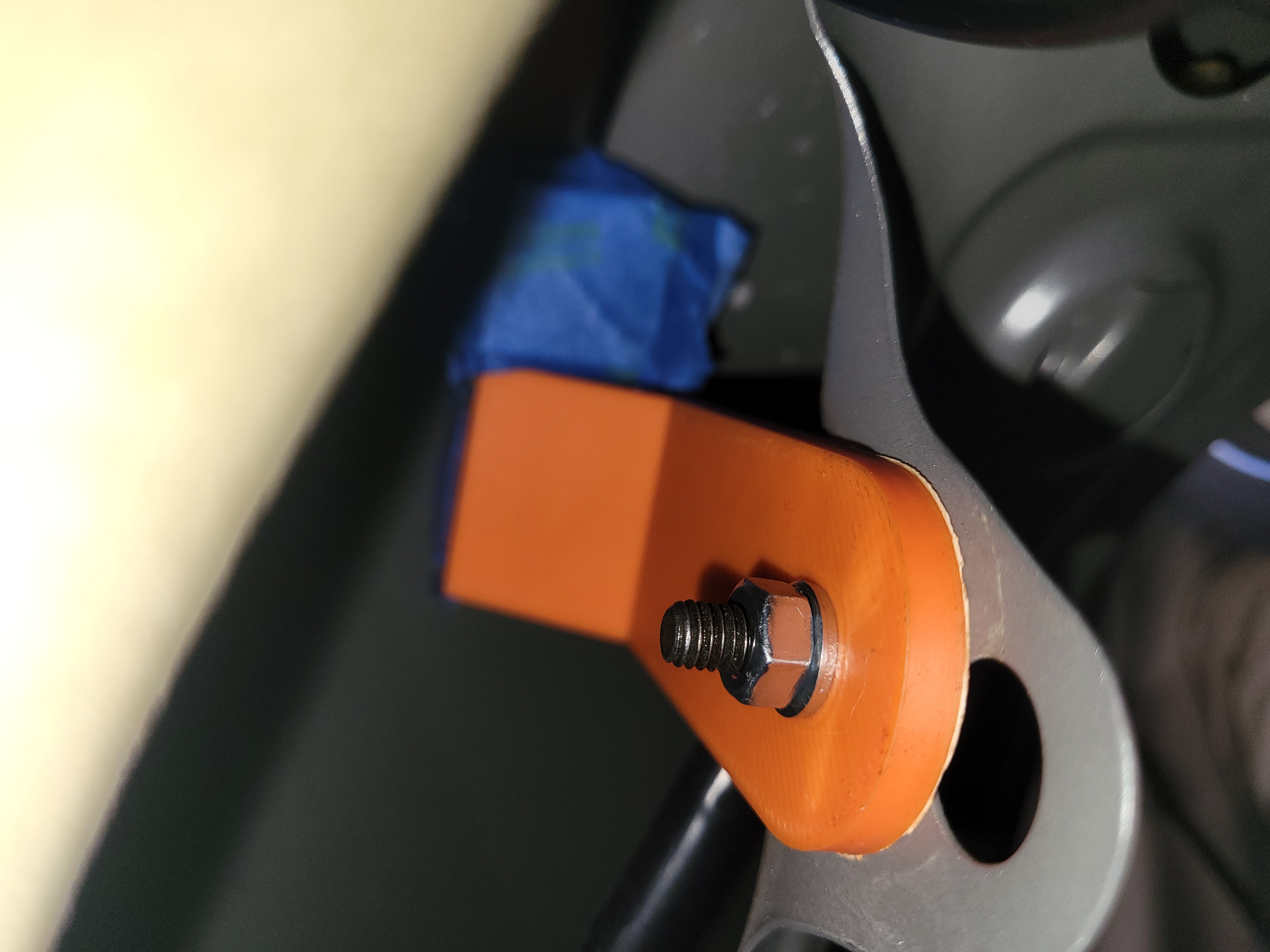
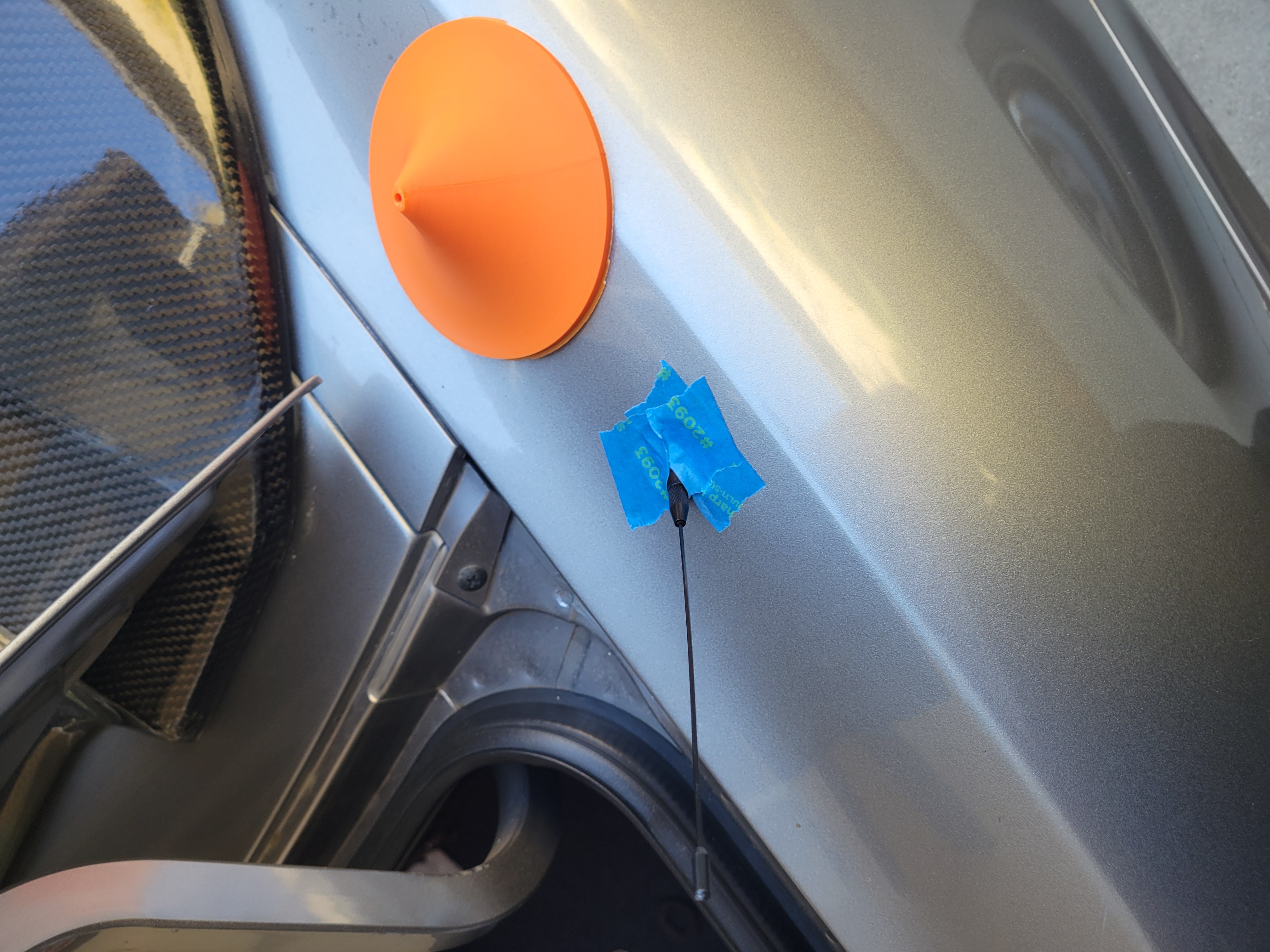
Eventually, after the iteration of Hyperion V2, I found an OEM part (82871-671-000) that slots nicely into hole. After some power drilling and cutting. I had a nice seal with a clean look.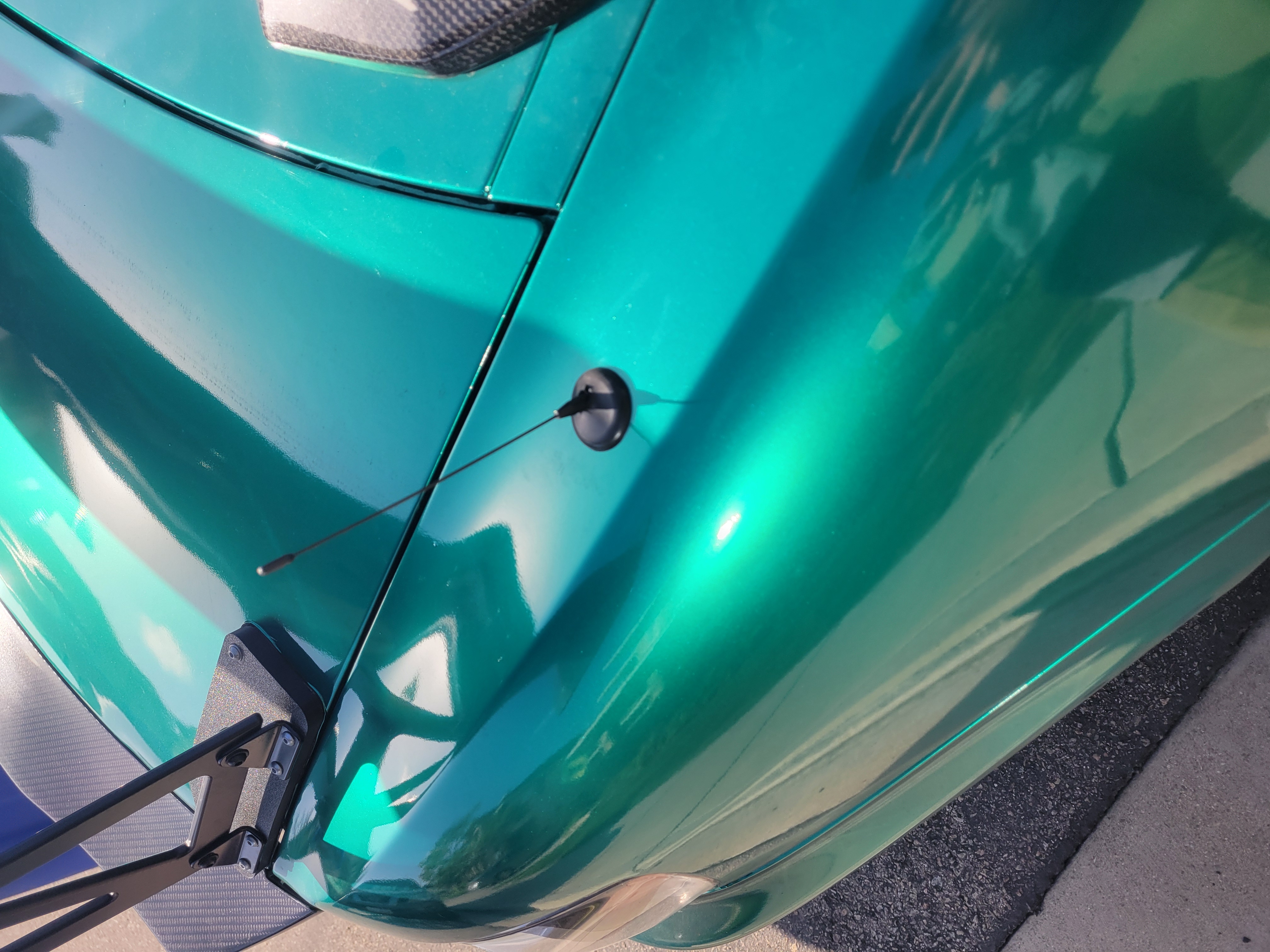
If you would like the STL of the mount or have any questions about the process, feel free to contact me at jonathan.lo@teamspiralracing.com or reach out to contact@teamspiralracing.com.
Programming the Radios#
As mentioned previously, one of the biggest advantages of GMRS is the ability to link off repeaters and extend range. Now the process for doing this is quite difficult (especially for beginners such as myself) so I’m going to be as detailed as I can. In general, the steps are:
- Get an FCC license to receive a GMRS callsign (and the right to operate on GMRS high power frequencies).
- Register for an account on myGMRS.com.
- Find a repeater you would like access to and request access.
- Wait for an email giving you approval. In it should be some private line (PL) tones that you should take note of.
- Purchase a programming cable and down the programming software for your GMRS radio.
- Program the PL tones and frequency and test.
GMRS License (1)#
The real GMRS license test is navigating the FCC website so I followed an extremely helpful guide on Reddit. After about two business days, I got my GMRS callsign.
Using myGMRS (2-4)#
Using my new callsign, I signed up for myGMRS.com. Using the map, I was able to find a repeater close to me. The repeater of interest to me was one off of Palomar Mountain (PCOMM). To gain access to this repeater, you need put in a request with justification. My justification was just wanting to learn how to operate with repeaters. I submitted an access request for that repeater and couple days or weeks later, I got an email with the PL tones and their respective frequencies.
Programming (5-6)#
I was an idiot and bough programming cables off the Retivis website even though they came in the box. Generally they look like this for the hand helds and are pretty compatible across brands of radio (Baofeng, Retivis, etc.).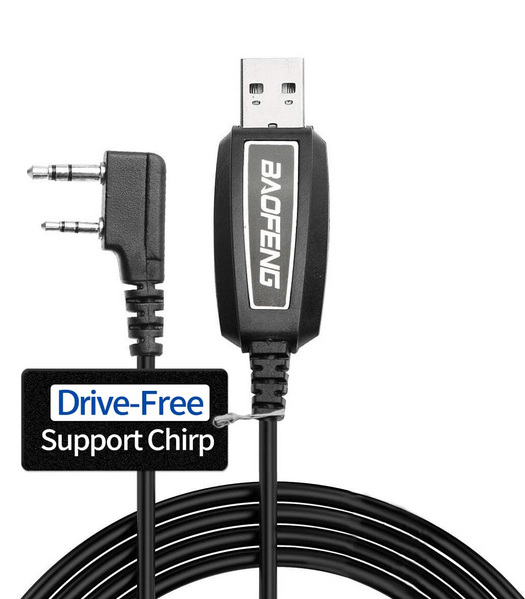
For the software, its generally available online for your brand. I got mine from the official Retivis website. Generally, you will need a Windows computer to run this software. For the actual programming process, you will want to be in range (but not too close). I made the mistake of being to close and got a lot of interference from the bouncing around.
To program, it is a bit different between brands. For mine I plugged in my Retivis RB17P, via the programing cable and turned it on. I launched the Retivis PB17P programming software and hit CTRL + R to read the current settings. Inside the email I got, it gave me some frequencies and the corresponding PL tones. I went into the programming software and adjusted the PL tones on the corresponding frequencies to the exact number mentioned. I then wrote back to the radio to save those settings.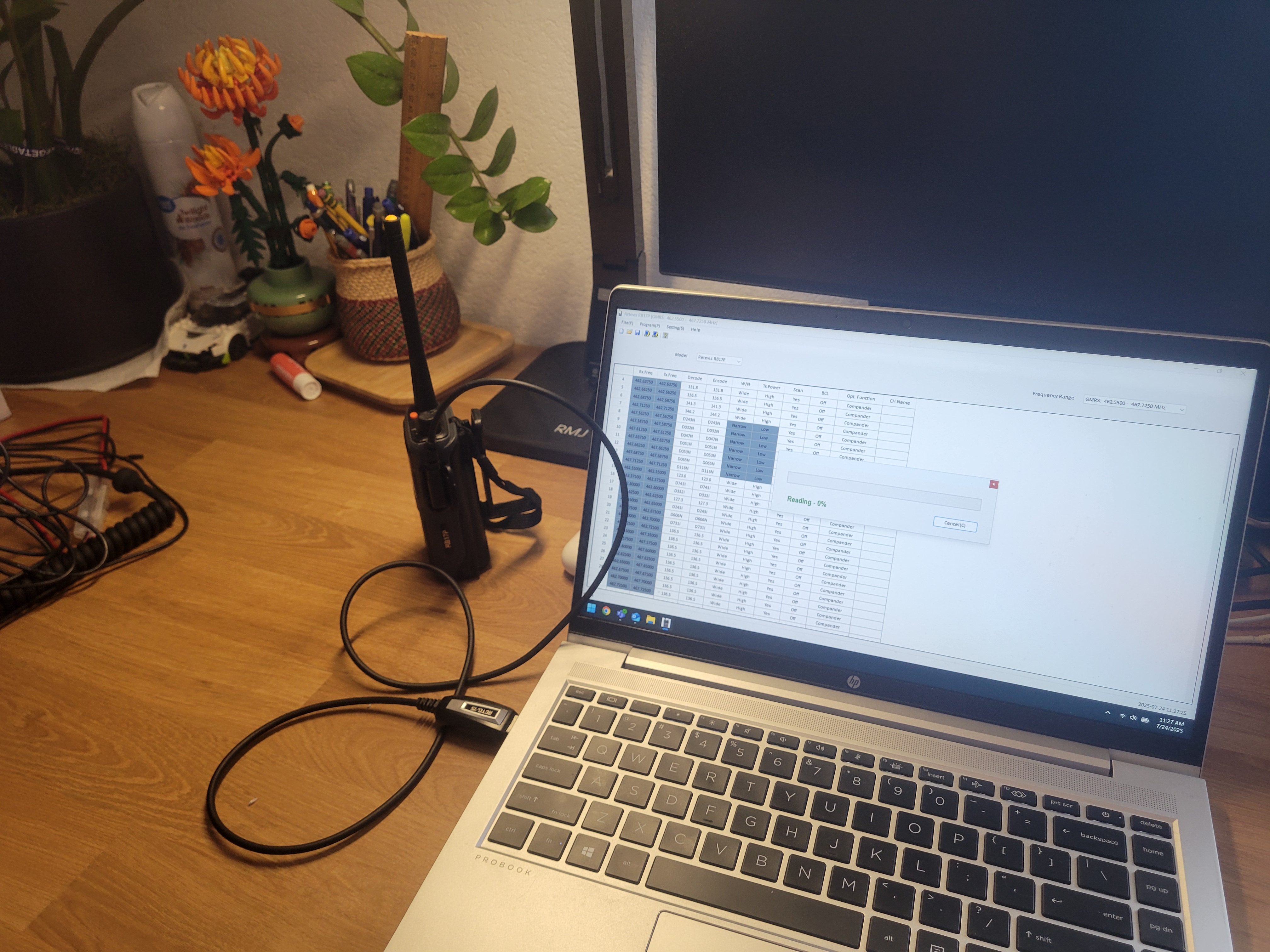
For me, after driving to Palomar Mountain, I got out my laptop and began programming each of the GMRS radios. Testing transmission on each radio was met with lots of feedback so I thought I had failed. However, after heading down after some runs I heard it pick up off the repeater and heard some folks chatting.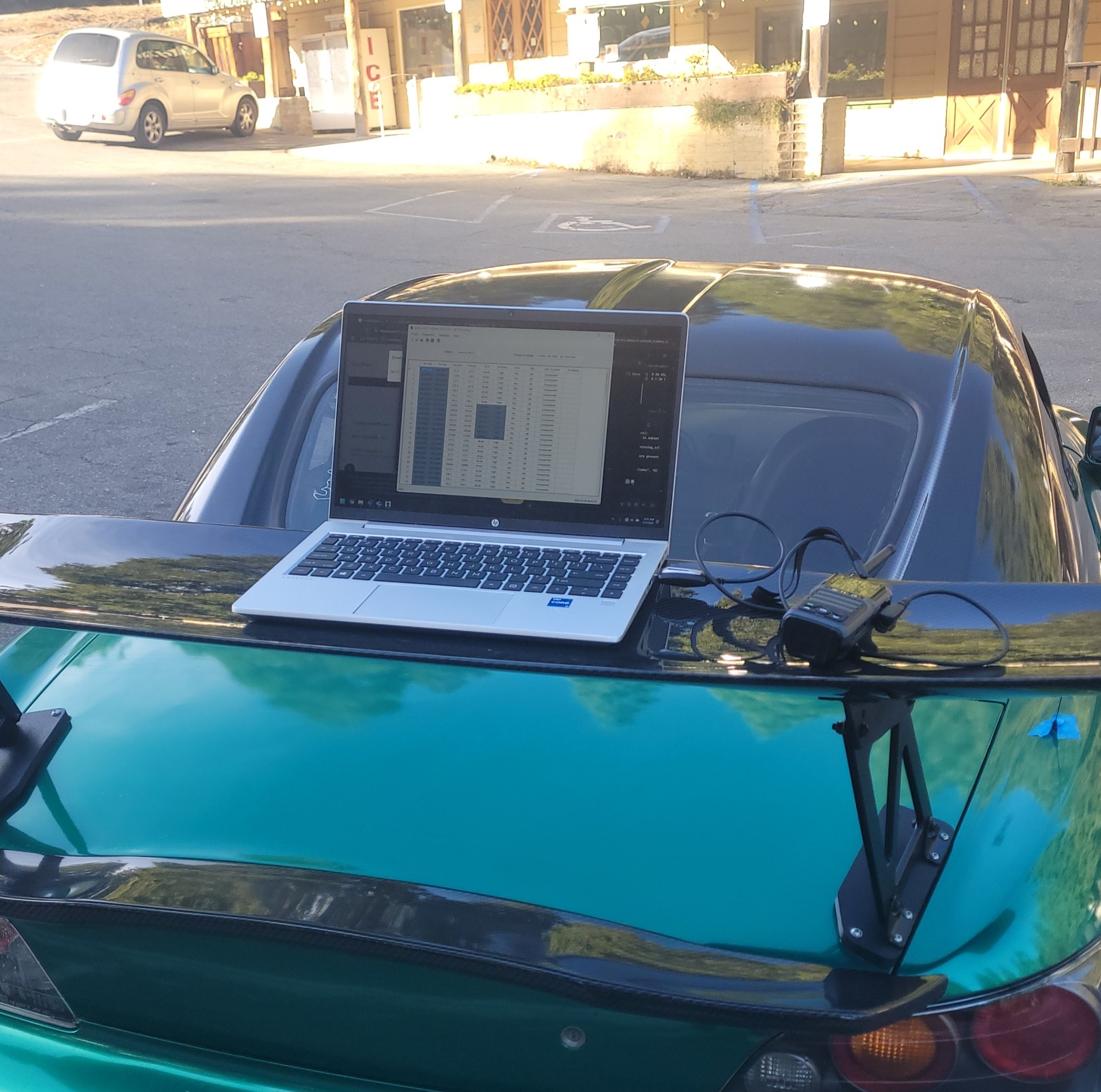
Programming the radios was quite an inconsistent process for me. If you are having trouble, I would recommend looking on the myGMRS forums as they are provide a wealth of information.
My Experience with GMRS#
Overall, I think GMRS is the way to go. At times, it can get spotty, especially if there is a lot of foliage or elevation but generally the transmission is loud and clear. It is a little finicky on the Retivis ones on how they handle C-CDC/T-CDC . Sometimes the beginning of your transmission gets cut off and may need to repeat yourself.
For some reason I’ve had better experiences with the handheld RB17P compared to the mobile RA86. Going forward, I plan to add a PTT system within the car, as well as some headset that I can plug into, similar to how race cars handle it.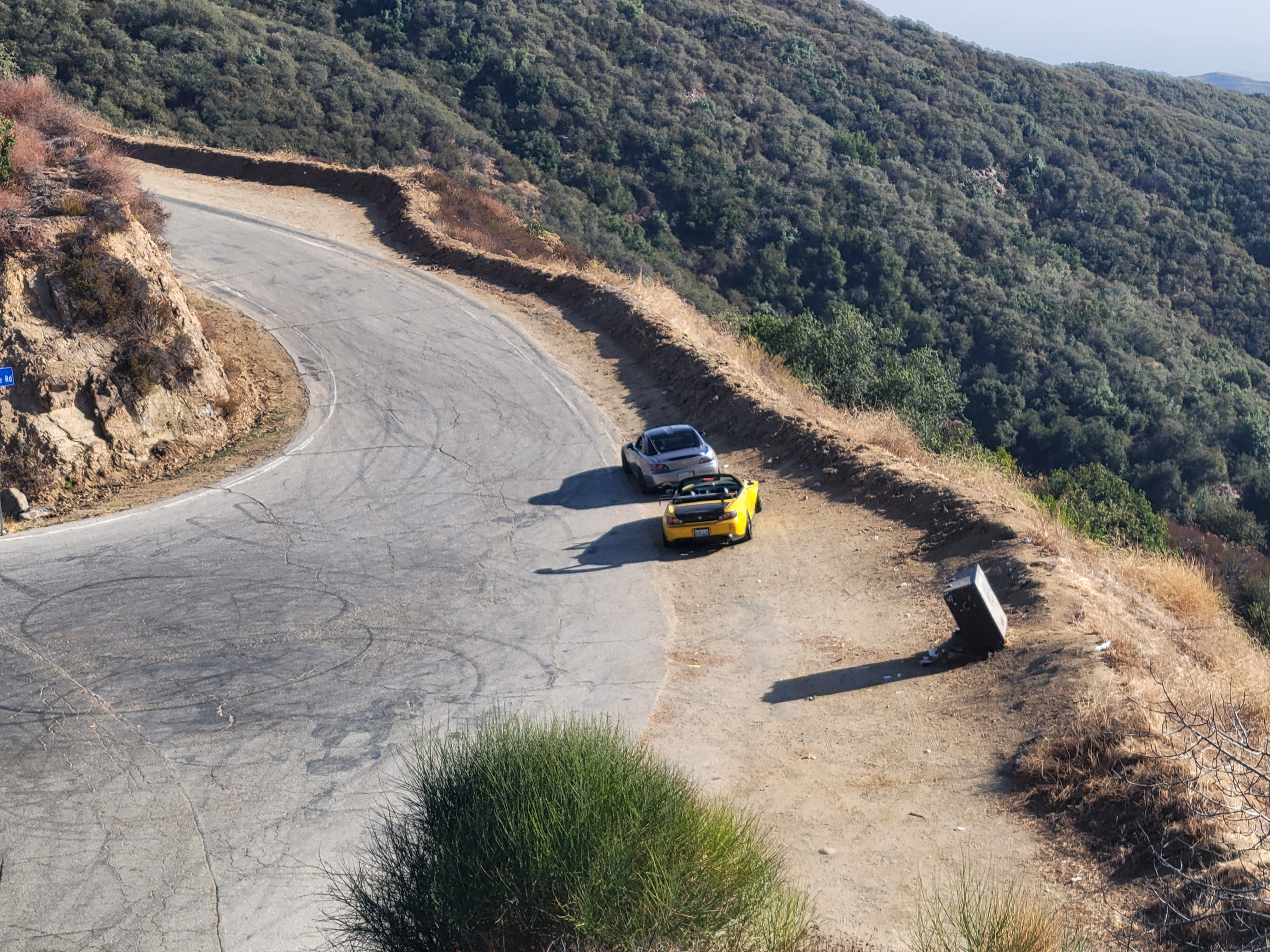
However, if you are cruising with each other, I’ve run into no issues. It’s proved quite helpful for a passenger to shout out that a biker is ahead. See the timestamp below for an example:
With all of this into consideration, I would definitely recommend GMRS for any car enthusiast looking to keep some communication.

